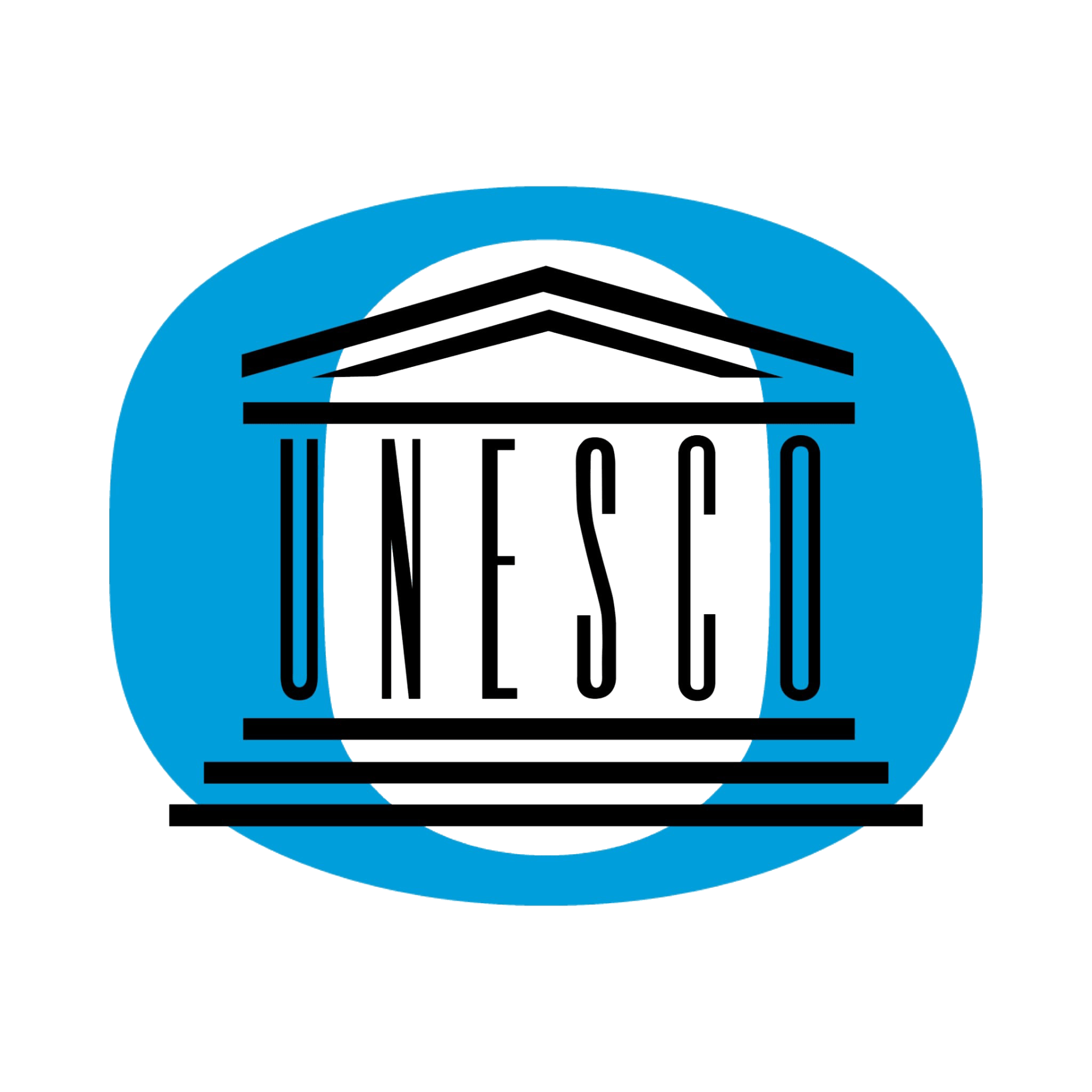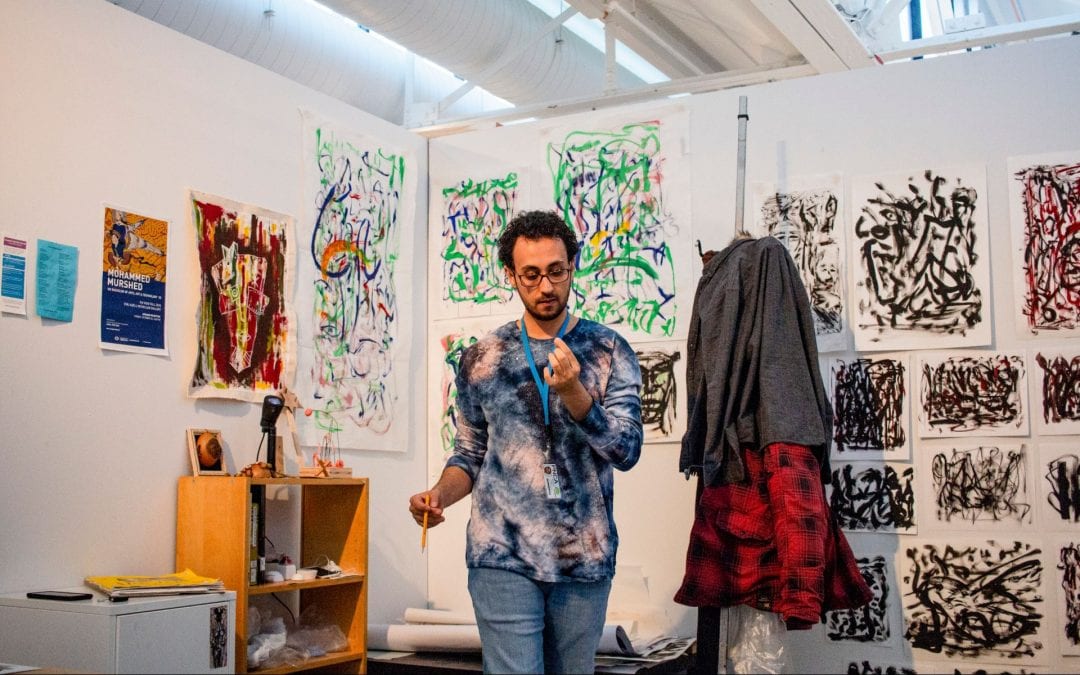By Payton Bruni
Mohammed Murshed makes rapid strokes of his paint brush as he works in his personal studio at the Pacific Northwest College of Art in Portland, Oregon. He works swiftly and tirelessly as he creates eight different paintings at once, adding layers upon layers of black, blue, gray and red as he moves from one piece of art to the next. “This is how I prefer to work,” Murshed says. “I do it all once and don’t stop until it’s finished.”
His love of art originates back to his childhood. Murshed says he grew up in Yemen helping his mom with small projects of paintings and pottery, and with art playing a role throughout his life, he says he’s always considered himself an artist. However, Murshed says it wasn’t until he came to the United States when he could pursue a career in art. “I had a lot of opportunities with family in Yemen, but over there taking art as a profession is an odd thing.”
But for Murshed, creating art is not just a career path. It’s a healing method he uses to cope with the trauma he faces from the 2011 Yemeni Revolution. “I was in Sanaa at the wrong time,” Murshed said. “I lost two of my closest friends and I got diagnosed with PTSD.”
Murshed, a student working towards a Master of Fine Arts, moved to the U.S. seven years ago to pursue an education and avoid the fallout of the Arab Spring. He started out in Eugene, Oregon, studying psychology at the University of Oregon, but later switched to art because of his long-time passion for the craft.
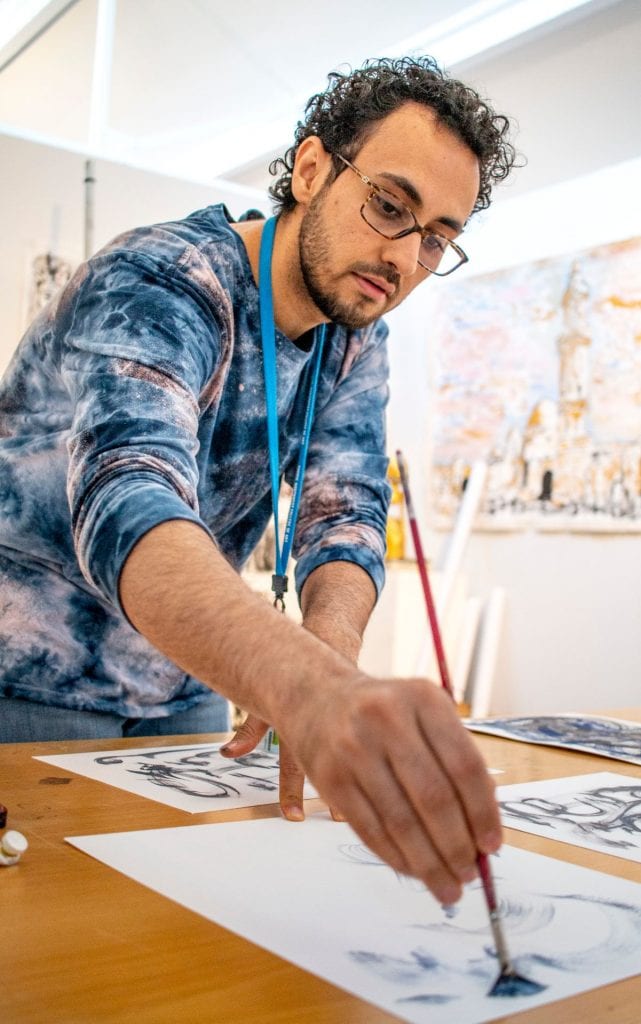
Murshed grew up in Yemen but moved to the United States in 2011 to avoid the fallout of the Arab Spring. Murshed ended up in Eugene, Oregon, studying for a BA in Art & Technology at the University of Oregon and moved to Portland after graduating in 2018.
Murshed’s artwork at the UO carried a purpose beyond college course-work. He said he wanted to express his feelings and enlighten other people suffering from PTSD. According to his colleagues from the UO, Murshed’s dedication to his art was evident. “He impressed me with his ability to contextualize what he was going through,” Professor David Reuter said, “and to process it into something that was not just beautiful in some ways but also relatable.”
One of Murshed’s friends from the UO School of Art, Adrion Kelley, said, “He hustles. That’s what makes him a great artist. He’s done stuff I’ve never seen anyone else do.” Another friend who has worked with Murshed on several art projects, Jason Soley, said, “I really appreciate his work. A lot of the stuff that he was doing was heavily rooted in issues back home.”
For Murshed, those issues back home propose a challenge he faces every day. In April 2018, United Nations Secretary-General António Guterres said in a public statement that “Yemen is the world’s worst humanitarian crisis. As the conflict enters its fourth year, more than 22 million people – three-quarters of the population – need humanitarian aid and protection.” The conflict that Guterres referred to is the civil war in Yemen, a power struggle between Ansar Allah forces – widely known as the Houthi movement – and the official government of Yemen.
The war has devastated Yemen and its economy, affecting the people of Yemen regardless of their involvement in the conflict. For Murshed’s family in Yemen, this has meant struggling for the essential resources people need to survive. “We speak on a daily basis to check on each other,” Murshed said. “But they’re suffering: no water, no food, no electricity. It’s the basic necessities of human surviving tools and they can’t even have those.”
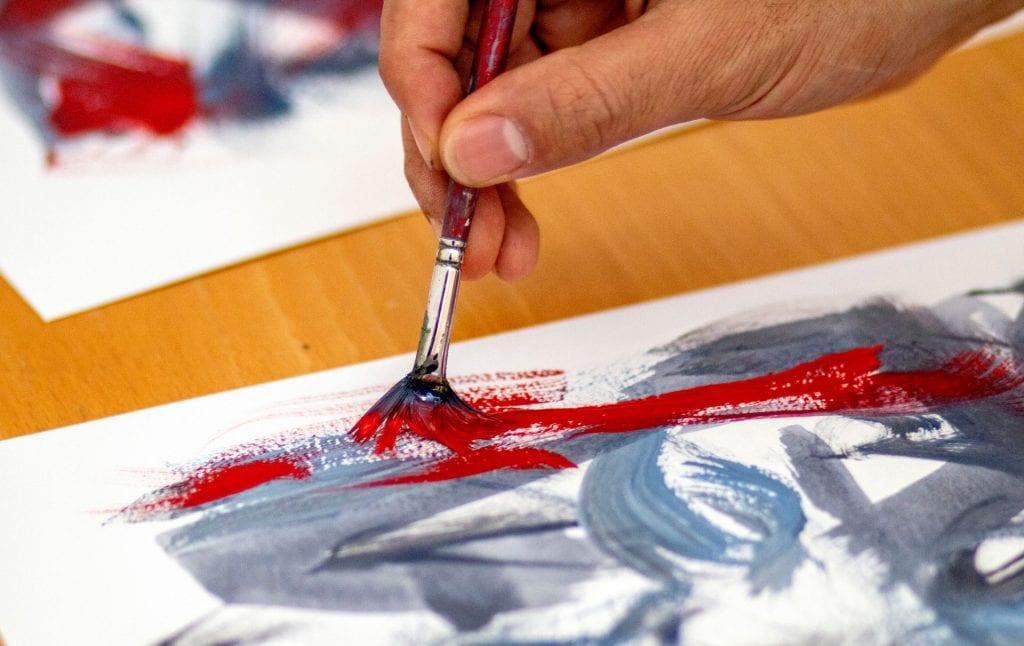
Murshed says he enjoys creating art but his work goes beyond simply working for pleasure. He says creating art is a healing process that helps him cope with the trauma he faces from the Yemeni Revolution. He says, “I was in Sanaa at the wrong time. I lost two of my closest friends and I got diagnosed with PTSD.”
Ali al-Kohlani, a Yemeni living in Yemen’s capital city Sanaa, said people in Yemen face challenges every day. “The problems they face are the airstrikes and the economic situation. The prices of food are very high, and people are not receiving salaries.” He said that when the war started, airstrikes led by Saudi Arabia would drag on 24 hours a day. “They never stopped day and night. They dropped on military camps and civilians, a lot of women and children were killed,” he said.
Saudi-led airstrikes funded by arms deals with Western countries – such as the $110 billion arms deal brokered between the U.S. and Saudi Arabia – have fueled the war in Yemen and taken a toll on civilian lives. In April 2018, an airstrike on a wedding party in northern Yemen killed more than 20 people. Then, in August, more than 40 children were killed when a school bus was struck by a Saudi-led coalition airstrike. These are only two examples of the atrocities that have taken place in Yemen since the start of the war, and al-Kohlani said he was frustrated by the lack of coverage from Western media. “Saudi Arabia kills children in Yemen every day,” he said, “but the media in the West does not cover this issue like they cover the murder of journalist Jamal Khashoggi.”
From Murshed’s perspective, he said there was adequate media coverage of Yemen, but there were would be little to no impact on the U.S. regardless of public awareness or U.S. involvement in the war. “If you think about it, Yemen is not going to affect the United States no matter what,” Murshed said. “It’s not going to affect anybody because we’re all busy trying to work and make our living.”
However, despite the realities people face in Yemen and his constant worry for his family, Murshed said he was motivated to persevere and make his family proud. “It’s a challenge for me that I have to battle every day, but I want to lift their heads up by doing something and going to school.” He said he was determined to use his artwork to educate people on topics such as PTSD and the war in Yemen. “We have to start with education. That’s why I’m doing visual studies and an MFA,” Murshed said. “I want my art to touch everyone so they can see that art is a universal language.”
-Payton Bruni
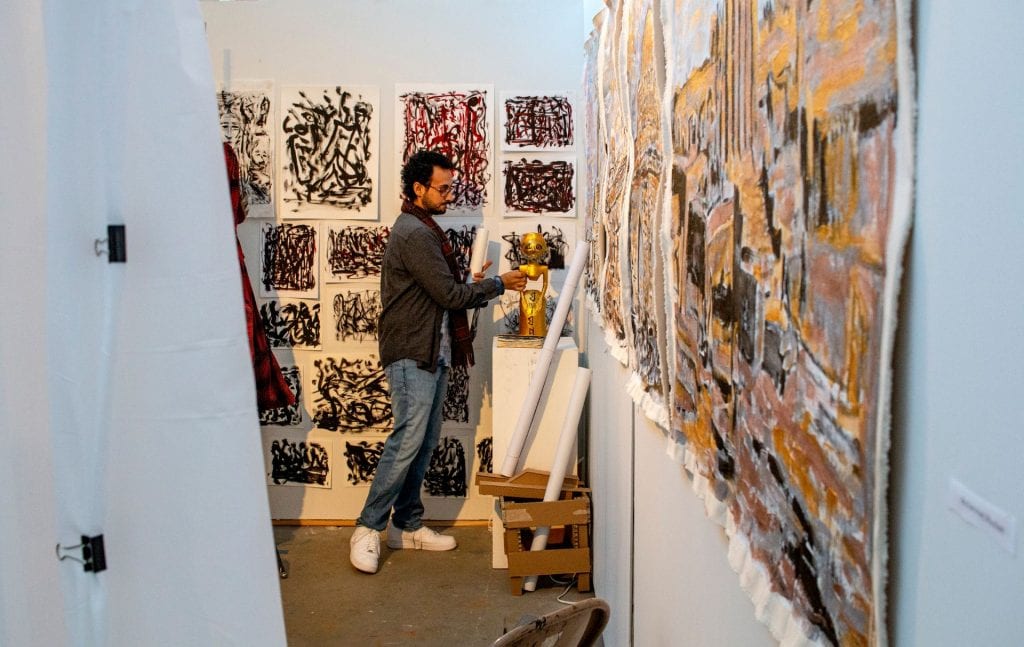
His studies at the Pacific Northwest College of Art are challenging – he says he’s reading about 700 to 1000 pages of coursework a week – but he’s determined succeed in his studies and make his family in Yemen proud. Murshed says that, ultimately, he wants to become a professor to educate people through art and cover topics such PTSD and the war in Yemen. He says, “I want my art to touch everyone so they can see that art is a universal language.”
